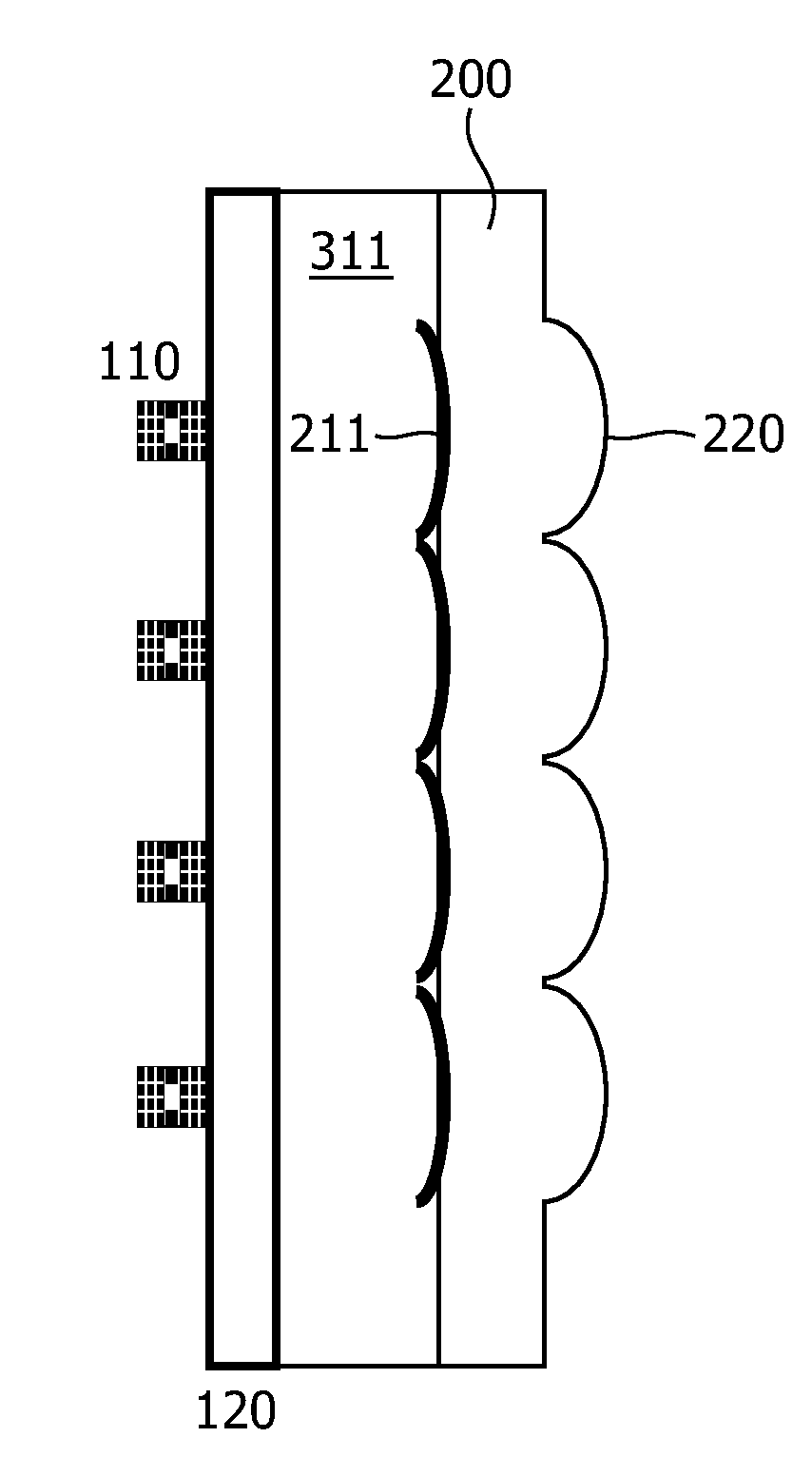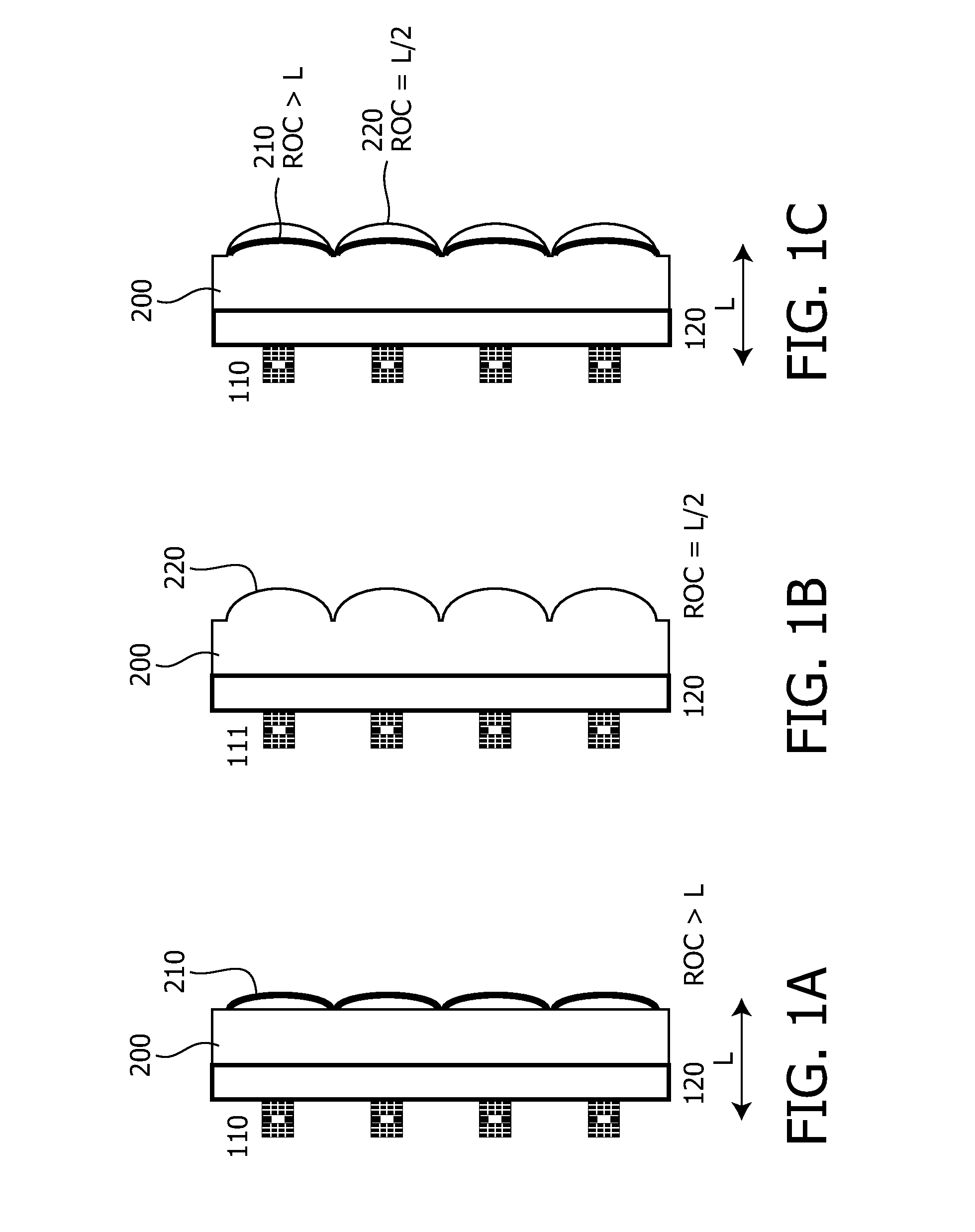Optical element for vertical external-cavity surface-emitting laser
a surface-emitting laser and optical element technology, applied in the field of optical elements, can solve the problems of bulky and need sophisticated adjustment, and achieve the effect of increasing the brightness of the vecsel
- Summary
- Abstract
- Description
- Claims
- Application Information
AI Technical Summary
Benefits of technology
Problems solved by technology
Method used
Image
Examples
Embodiment Construction
[0019]FIG. 1 shows a comparison of an embodiment of a VECSEL array with the optical element of the present invention compared with solutions of the prior art. FIG. 1A depicts a VECSEL array of the prior art in which the external mirrors are formed on an optically transparent substrate 200 which is attached to the optically transparent carrier substrate 120 on which the semiconductor layer stack 110 of the VECSELs is bonded or grown. This construction is similar to a so called backside or bottom emitting VCSEL which emits the laser radiation through the carrier substrate. The external mirrors on substrate 200 are formed by processing the surface to a spherical (or aspherical) shape (mirror surface 210) and coating a reflective layer on this surface. The radius of curvature (ROC) of the resulting curved regions of the surface fulfill the condition ROC>L, L being the distance of these external concave mirrors to the gain region of the VECSEL.
[0020]In the field of VCSELs it is known to ...
PUM
 Login to View More
Login to View More Abstract
Description
Claims
Application Information
 Login to View More
Login to View More - R&D
- Intellectual Property
- Life Sciences
- Materials
- Tech Scout
- Unparalleled Data Quality
- Higher Quality Content
- 60% Fewer Hallucinations
Browse by: Latest US Patents, China's latest patents, Technical Efficacy Thesaurus, Application Domain, Technology Topic, Popular Technical Reports.
© 2025 PatSnap. All rights reserved.Legal|Privacy policy|Modern Slavery Act Transparency Statement|Sitemap|About US| Contact US: help@patsnap.com



